Vehicle specifications and photographs
Tankers and Pumpers (fire engines)
Class 1 Tankers
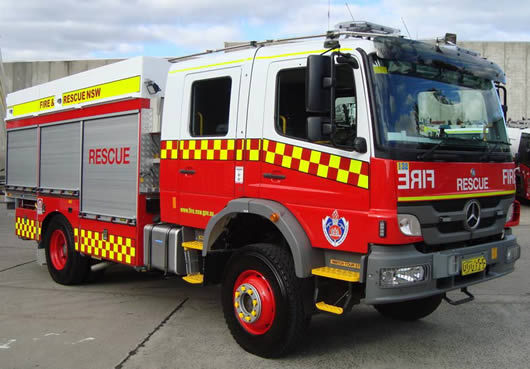
Class 1 Tankers are a multi-purpose off road capable tanker that can carry more water than urban fire engines. Some have hazmat and primary rescue capability and a number of tankers have been commissioned with Compressed Air Foam Systems (CAFS). The use of CAFS increases the tanker’s firefighting extinguishing capability five fold. All of the tankers have Class A bushfire foam systems, and pump-and-roll firefighting capabilities allowing them to deliver water while moving, which is effective for fighting bushfires and fast moving grass fires. The new tankers also incorporate cabin protection spray systems for the safety of firefighters in burn over situations. The pump capacity is a minimum of 1500 litres per minute.
Class 2 Pumpers

Class 2 Pumpers are designed for both metropolitan and regional areas and may have primary rescue capability. Class 2 pumpers are located in rural/regional or metropolitan areas where community infrastructure is of an intermediate hazard level and the number of fire calls results in the staffing for the area being predominately retained firefighters. The Class 2 may be fitted with a manual or automatic transmission. The pump capacity is a minimum of 3000 litres per minute.
Class 3 Pumpers
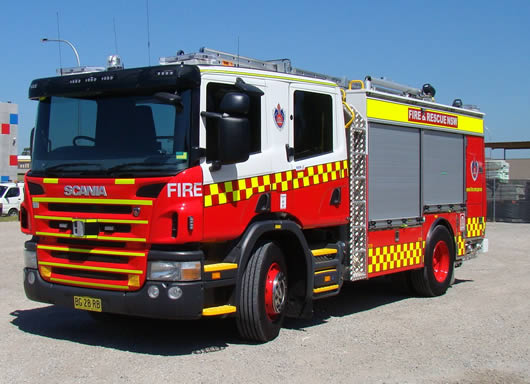
Class 3 Pumpers (heavy fire engines) are designed for both metropolitan and regional areas and can be configured as either primary rescue or hazmat vehicles with Compressed Air Foam Systems (CAFS). The Class 3 appliance is fitted with an automatic transmission and in-cabin BA seating. The pump capacity is a minimum of 3700 litres per minute.
Aerials firefighting appliances

An aerial appliance is a fire appliance with a vertical reach of at least 29 metres, designed for high level rescue or firefighting.
An aerial ladder platform is an aerial appliance that combines the features of a turntable ladder and a hydraulic platform. The ladder platforms range from 27 to 44 metres.
An aerial pumper is a minor aerial appliance, with a vertical reach of 15 metres.
Specialised Appliances
Remotely Piloted Aircraft Systems (RPAS)
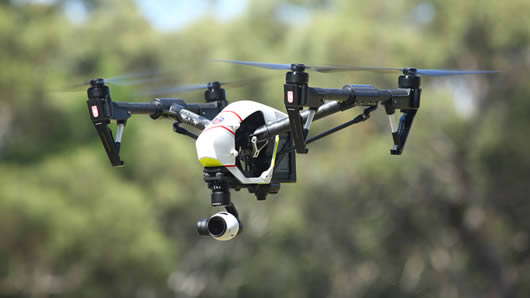
RPAS, (commonly known as drones) are small lightweight easily manoeuvred machines that can fly considerable distances remotely controlled by a pilot. Using RPAS at incidents represents only a small part of their potential capability. RPAS can also record, compile and disseminate information during the prevention, preparation and recovery phase of operations for data collection and information gathering purposes. This includes pre-incident planning and rapid damage assessment following major incidents such as floods and bushfires.
Turbine Aided Firefighting (TAF20)
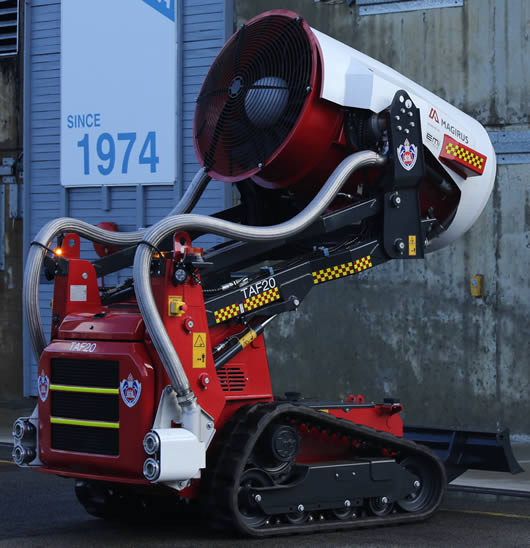
The TAF20 is a versatile remote control firefighting appliance consisting of a turbine fan and water delivery system mounted on a compact crawler vehicle. The turbine is fitted with a nozzle ring which atomizes water and foam to form a fine mist which is distributed by propeller. The spray action is variable, ranging from a mist which can be projected up to 60 metres to a water jet able to be projected up to 90 metres. The mist is a very efficient fire fighting medium and has a much higher cooling capacity than conventional systems. The TAF20 is operated by remote control, allowing direct attack on fires without exposing firefighters to the same level of risk. For example, in a tunnel fire, the TAF20 can be sent on ahead while crews follow behind at a safe distance. The operator can be as far as 500 metres away from the unit.
All Terrain Vehicle (ATV)
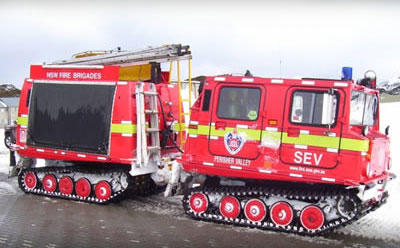
The Hagglund All Terrain Vehicle (ATV) consists of two track-driven cars with fibreglass reinforced bodies, coupled to each other by an articulated steering joint.
The vehicle operates in and around the snowfields and high country areas of the Snowy Mountains. Its operational scope includes wilderness search and rescue, general land rescue (MVA), limited hazardous materials operations and structural firefighting capability. It is able to operate in extreme weather conditions on a variety of surfacing including soft and deep packed snow, light scrub country, and paved roads.
Modular (Pod) Transport System

Rehabilitation Pods are designed to provide the necessary equipment to support firefighters working at long duration or complex incidents. These are transported by a One Hook Loader vehicle.
The Hytrans High Volume Mobile Water Supply System Pod can be used to supply large volumes of water (potentially around 8000 litres/minute) for firefighting at large-scale fires, across distances of up to 1.5 kilometres. It can operate from both a static and reticulated supply, and pumps water vertically up to a height of 60m. It lays its inventory of 150mm hose at a maximum speed of 40 km/h. The appliance can also be used to pump water from flood-affected areas and move it up to 1.5 kilometres. This could include car parks and basements or low-lying streetscapes. Furthermore, the appliance can be used to assist in moving town water if the existing reticulated supply is compromised.
Fire Duty Pod The Fire Duty Module supports crews during extended operations and provides crews with basic amenities and fire fighting support capabilities at an incident site.
Responder
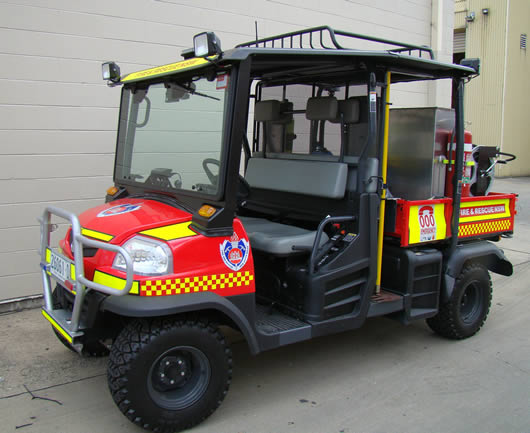
The Responder (rugged terrain vehicle) is a small rapid intervention vehicle used at major public events. The vehicle has limited equipment and a small firefighting pump. The Responder is used for first response in situations where large numbers of people are expected and access for larger appliances may be difficult.
Incident Control Vehicles

Mobile Command Centres (MCCs) provide a platform for FRNSW Incident Management Teams (IMT) and inter-agency liaison officers to command, control and coordinate the response and recovery phases during major emergencies and events. MCCs provide IMT officers with advanced information and communications technology systems adapted for incident management. They also provide meeting and workspaces for command, operations, planning, logistics and media officers.